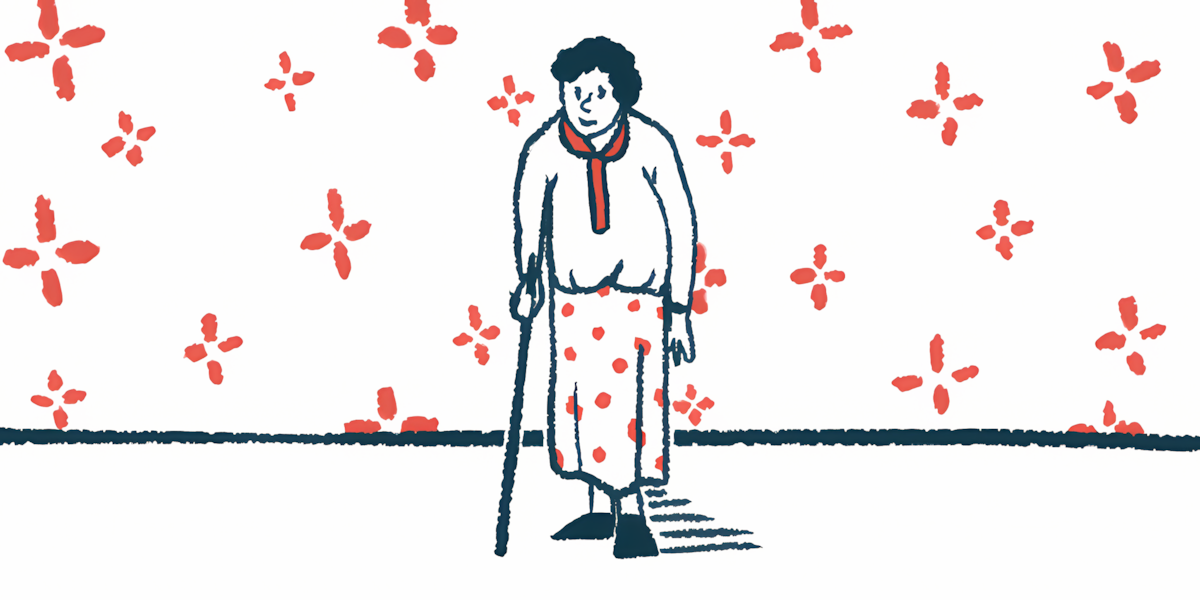Physical challenges, stigma complicate assistive device use
Researchers call for strategies to address barriers to use

Barriers including physical difficulties and social stigma may affect how people with Parkinson’s disease use assistive devices meant to help facilitate movement and prevent falls, a study found.
Parkinson’s patients said physicians prescribing assistive devices helped them overcome stigma or negative associations. Other possible interventions, including education initiatives and support groups, emerged from the study, “Barriers and strategies affecting the use of assistive devices for falls prevention among people with Parkinson’s disease: a qualitative pilot study,” published in the journal BMC Geriatrics.
“The findings of this study highlight the urgent requirement to develop strategies that effectively address and mitigate the impact of the identified barriers,” the researchers wrote.
Parkinson’s motor symptoms include freezing while walking, changes in gait, and difficulty balancing. People experiencing these symptoms are more likely to fall, which can cause injuries and other complications.
Many people with Parkinson’s use aids and adaptations like canes, walkers, and crutches to reduce the risk of falling. However, “despite the advantages provided by these aids, many people with [Parkinson’s disease] do not adhere to their use,” the team noted.
Barriers to assistive device use
Better understanding the factors that influence how people with Parkinson’s use assistive devices may help physicians and policymakers address barriers to use, the researchers said. The Portugal-based team interviewed 19 people with Parkinson’s about these factors. Most participants (63.2%) were male, and the average age was 72.3.
Some of the barriers participants reported facing involved physical limitations. Holding a device could be difficult, and environmental factors like uneven surfaces and crowds could make use more complicated, they said. Parkinson’s symptoms could exacerbate these challenges, with “motor symptoms and complications such as dyskinesia and freezing of gait [influencing] adherence to the assistive device,” the team wrote.
Nonmotor symptoms, which can include cognitive impairment, also affected use. For example, some participants experienced difficulty multitasking. Using their assistive devices while performing other activities, like engaging in conversation, was more challenging for these people.
Other barriers to device use were psychological, with participants fearing stigma or disliking the symbolic associations of their mobility aids. “It is difficult to accept the need for these devices to maintain mobility,” one participant said. “All of us who need to use some walking aid surely, in some situation, experienced the look people gave us or just the fact that society ignores you because you are a disabled person.”
However, when healthcare professionals prescribed assistive devices, this helped some participants overcome negative associations. “I don’t care what others think or say,” one participant said. “If the health team thinks it’s best for me, I will follow their advice.”
Based on these themes and participants’ responses, the research team identified strategies that could lower barriers and increase the use of assistive devices.
Community education initiatives could help combat stigma at the national or social level, the researchers found. “Putting people with [Parkinson’s disease] in contact with younger people can allow them to build empathy and learn more about what Parkinson’s is and what we experience,” one participant suggested. “I believe this can be an effective way to combat any type of prejudice or negative attitudes.”
Some patients said institutional interventions like support groups for people with Parkinson’s could help people develop coping strategies.
When it came to individual interactions with their care teams, participants emphasized the importance of a personalized care regimen. “My problem is not the same as the other patients; therefore, doctors and nurses must provide care that is aimed at my problems,” one participant said. “The same intervention doesn’t solve different problems.”
Another participant noted that being involved in the process of choosing an assistive device helped their adherence. “I think it helped me realize that I have to use a cane to keep it safe while walking,” the patient said.
The researchers cautioned that because they recruited participants via social networks, the findings may not reflect the Parkinson’s population as a whole. They also noted that participants may have presented their experiences in a way that they felt was socially acceptable. This framing could have affected results, but the interviews were structured to avoid this issue, they said.
The identified barriers could help design strategies to increase use of necessary mobility aids for people with Parkinson’s, the researchers said. “To effectively enhance adherence to assistive devices, healthcare policymakers and administrators must prioritize the perspectives of assistive device users and consider their experiences in addressing these barriers,” they wrote.






